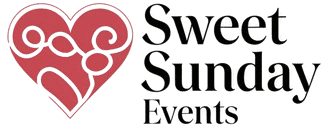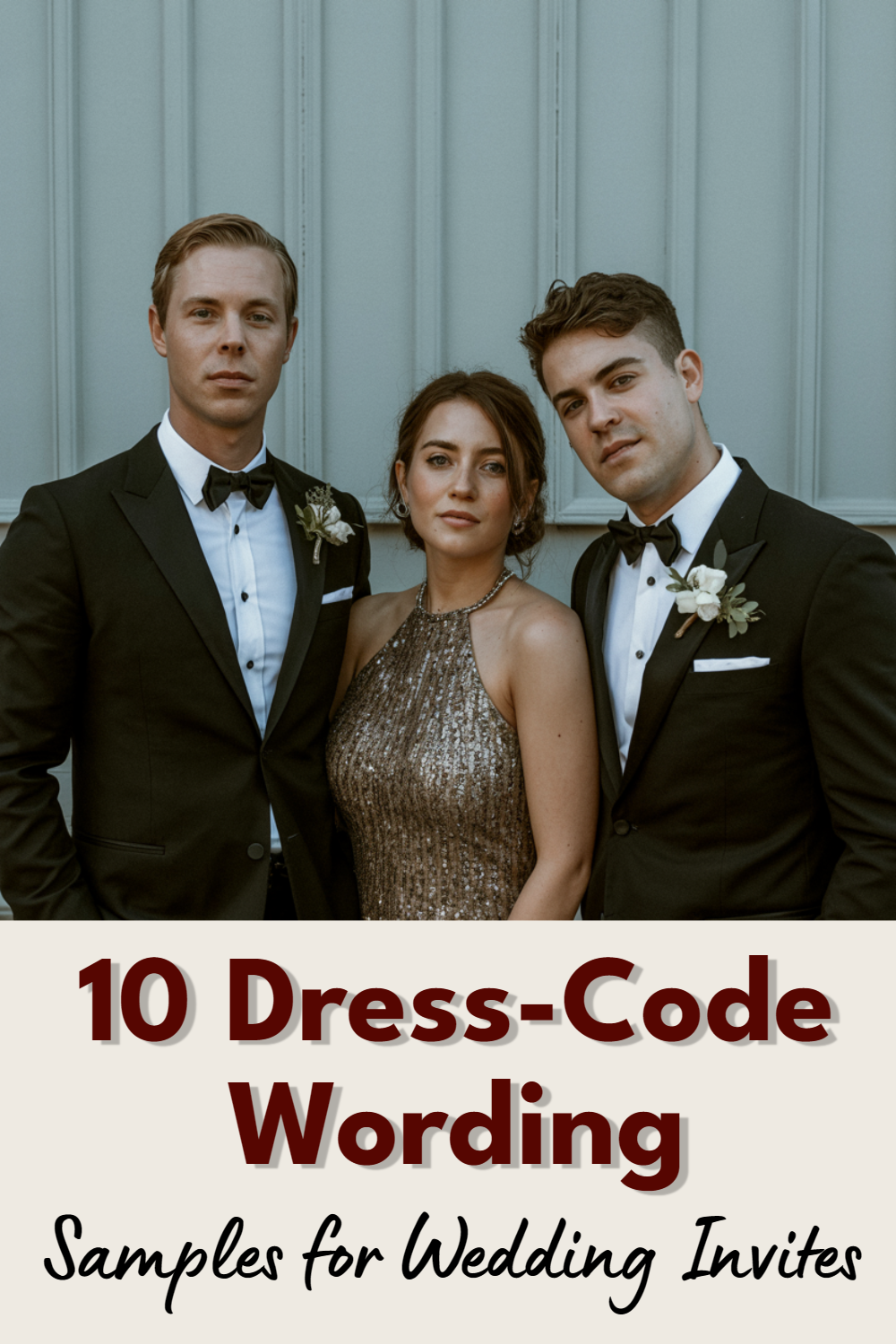Setting the dress code for your wedding shouldn’t feel like drafting legal documents. Your guests want to celebrate with you, not spend three hours googling “what does garden party attire even mean?”
Here are ten tried-and-tested dress code wordings that actually work, complete with the psychology behind why they hit the mark.
1. Black Tie Optional
“Black tie optional – we’d love to see you dressed up, but your presence matters more than your tuxedo.”
This phrasing takes the pressure off while still communicating your vision. Uncle Bob won’t panic about renting a tux, but your fashion-forward friends will know they can go all out.
The key here is acknowledging that not everyone owns formal wear or feels comfortable in it. Adding that second clause about presence mattering more shows you’re thinking about your guests’ comfort, not just your photo aesthetic.
2. Cocktail Attire with Personality
“Cocktail attire encouraged – think wedding guest chic with a splash of fun. We’re celebrating, after all!”
Standard “cocktail attire” can feel sterile and intimidating. This version gives permission to have personality while maintaining the sophistication you want.
The phrase “wedding guest chic” helps people visualize exactly what you mean. It’s that sweet spot between overdressed and underdressed that most people instinctively understand.
3. Garden Party Elegance
“Garden party attire – sundresses, slacks, and comfortable shoes for dancing on grass. Leave the stilettos at home!”
Outdoor weddings need specific guidance, and this wording tackles the biggest concern: footwear. Nobody wants to spend your ceremony pulling their heels out of the lawn.
The mention of dancing adds warmth and helps guests picture the vibe. It’s celebratory, not stuffy, and the practical advice about shoes shows you’re thinking ahead.
4. Casual with Boundaries
“Casual celebration – come as you are, but maybe skip the flip-flops and gym shorts. We’re aiming for ‘nice dinner out’ vibes.”
Casual dress codes can backfire spectacularly without some gentle boundaries. This wording prevents the dreaded shorts-and-tank-top situation while keeping things relaxed.
The “nice dinner out” comparison gives everyone a reference point. Most people know how to dress for a decent restaurant, so you’re speaking their language.
5. Seasonal Specificity
“Summer wedding attire – light fabrics, bright colors welcome, and don’t forget sunglasses for our outdoor ceremony!”
Weather-specific guidance shows you care about guest comfort. This wording encourages appropriate fabric choices without being preachy about it.
Mentioning sunglasses adds a practical touch that guests will actually appreciate. It’s these small considerations that make people feel looked after, not just invited.
6. Themed Without Costume
“Rustic chic – think barn dance meets dinner party. Boots are welcome, bow ties optional.”
Themed weddings walk a fine line between fun and ridiculous. This wording captures the aesthetic without making people feel like they’re attending a costume party.
The “boots welcome” detail is genius because it gives permission for the theme while the “bow ties optional” keeps it from feeling mandatory. Choice is everything in dress code communication.
7. Destination Wedding Practical
“Beach formal – dressy but sand-friendly. Flowing fabrics and bare feet encouraged for the ceremony!”
Destination weddings need extra consideration for climate and logistics. This wording acknowledges the unique challenges of beach celebrations.
The “bare feet encouraged” detail is both practical and romantic. It gives guests permission to be comfortable while embracing the beachy vibe you’re going for.
8. Winter Wedding Warmth
“Winter cocktail attire – dress warmly and elegantly. Our venue is heated, but the photo session might be chilly!”
Cold weather weddings require honest communication about temperature. This wording helps guests plan for both indoor and outdoor moments.
Mentioning the photo session specifically is brilliant because it prevents the “I didn’t bring a coat and now I’m freezing during pictures” situation that ruins group shots.
9. Brunch Wedding Brightness
“Brunch wedding attire – think Sunday best with a mimosa in hand. Pastels and patterns welcome!”
Morning and afternoon weddings have their own dress code logic. This wording captures the lighter, more relaxed energy of daytime celebrations.
The mimosa reference immediately sets the tone as fun and approachable. It’s hard to be uptight about dress codes when you’re thinking about brunch cocktails.
10. Creative Black Tie
“Black tie with a twist – formal wear encouraged, but feel free to add your personal flair. We love a good conversation starter!”
Some couples want formality with personality. This wording encourages elegance while giving permission for individual expression.
The “conversation starter” line is particularly clever because it frames unique fashion choices as social assets rather than dress code violations. It’s inclusive and encouraging.
Getting the Tone Right
The secret to effective dress code communication lies in balancing your vision with guest comfort. Nobody wants to feel underdressed or overdressed, but they also want to contribute to your wedding’s atmosphere.
Consider your guest list when crafting your wording. A group of corporate professionals might appreciate more formal guidance, while a bohemian crowd might prefer creative freedom.
Practical Placement Tips
Dress code information works best on your wedding website rather than crowding your invitation. This gives you space to elaborate and answer common questions.
Include a brief mention on the invitation itself, then direct guests to your website for details. Something like “Cocktail attire – see our website for details” works perfectly.
Common Pitfalls to Avoid
Avoid vague terms like “dressy casual” or “semi-formal” without explanation. These mean different things to different people and cause more confusion than clarity.
Don’t overthink it to the point of writing a novel. A sentence or two with specific, helpful details beats a paragraph of flowery language that says nothing concrete.
Making It Personal
The best dress code guidance reflects your personality as a couple. If you’re laid-back people, your wording should reflect that. If you love formality and tradition, embrace that energy.
Your wedding day should feel authentically you, and that includes how you communicate with your guests. Trust your instincts and speak in your own voice.
Final Thoughts on Dress Code Success
Getting dress code wording right isn’t about controlling your guests – it’s about helping them feel confident and comfortable celebrating with you. Clear, kind communication serves everyone better than mysterious or demanding language.
Your guests want to honor your vision while feeling like themselves. Give them the tools to do both, and everyone wins.


